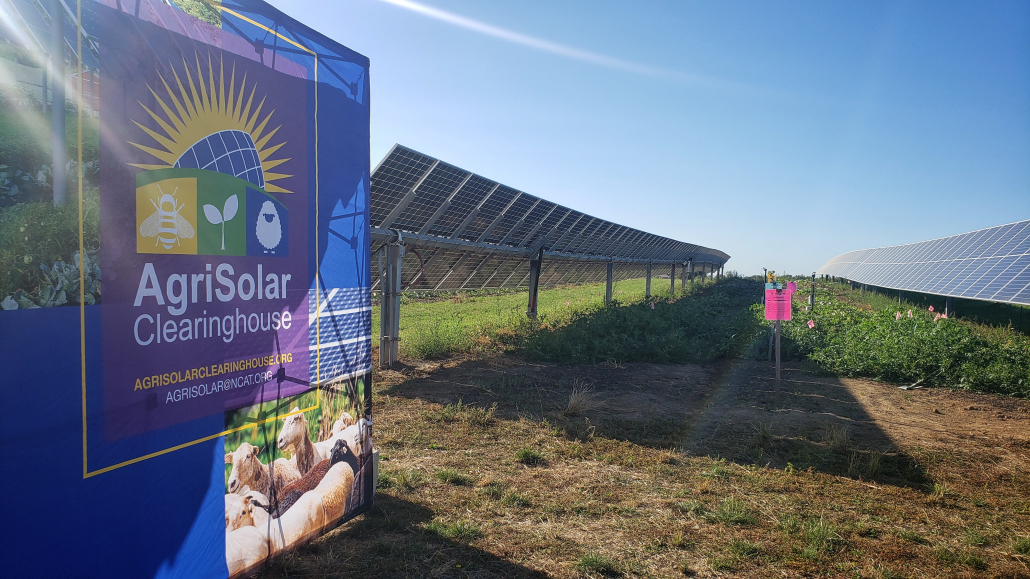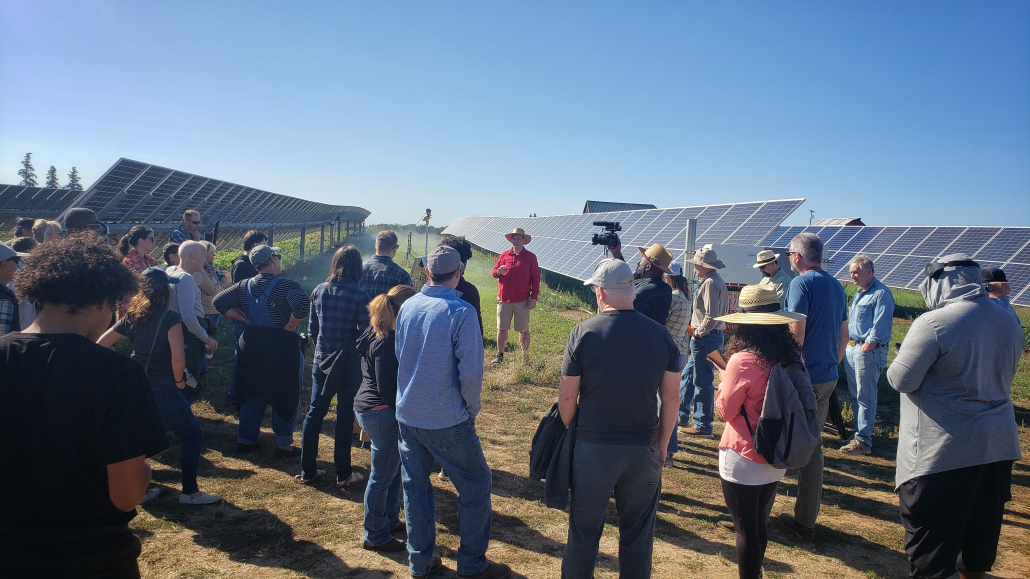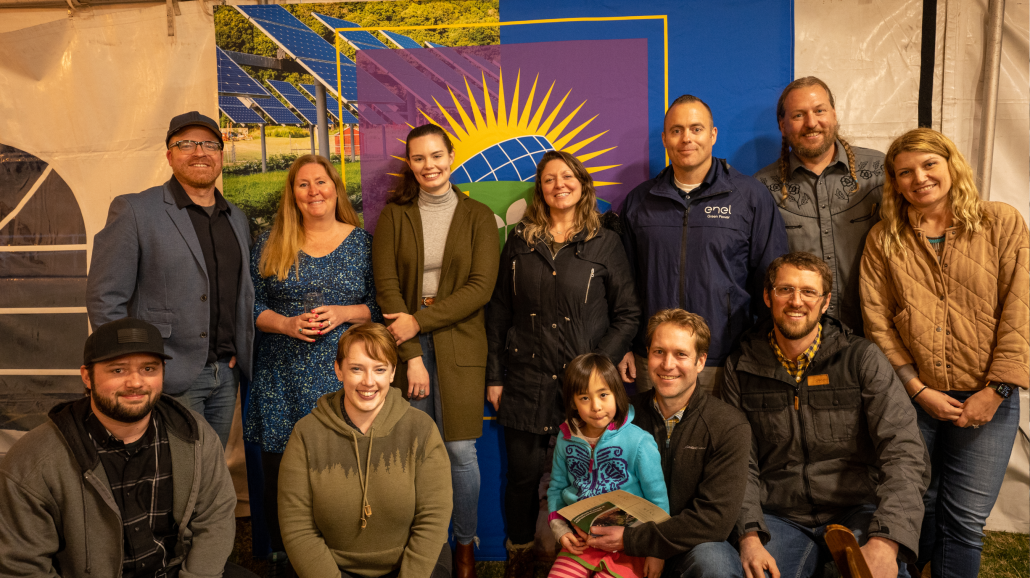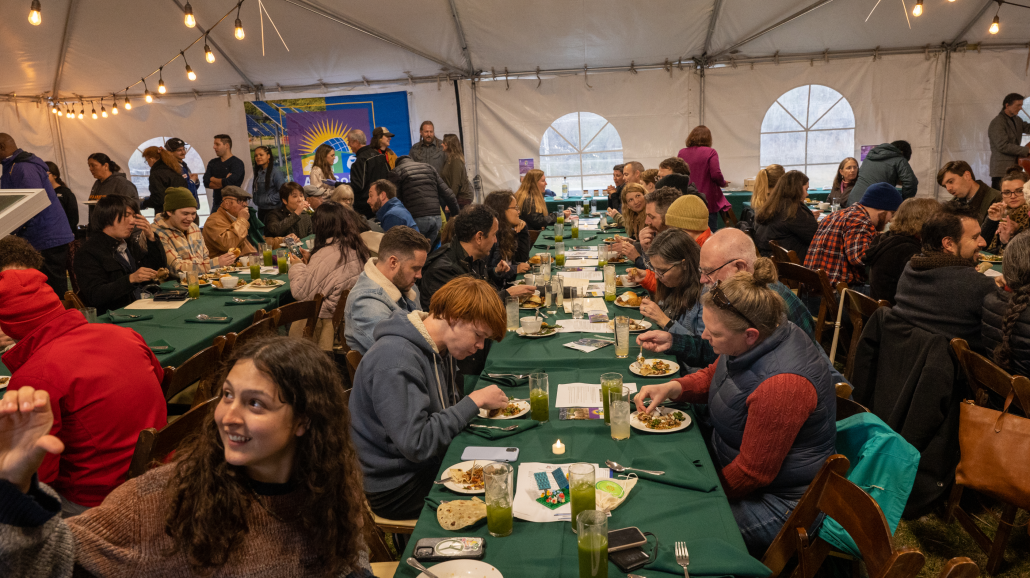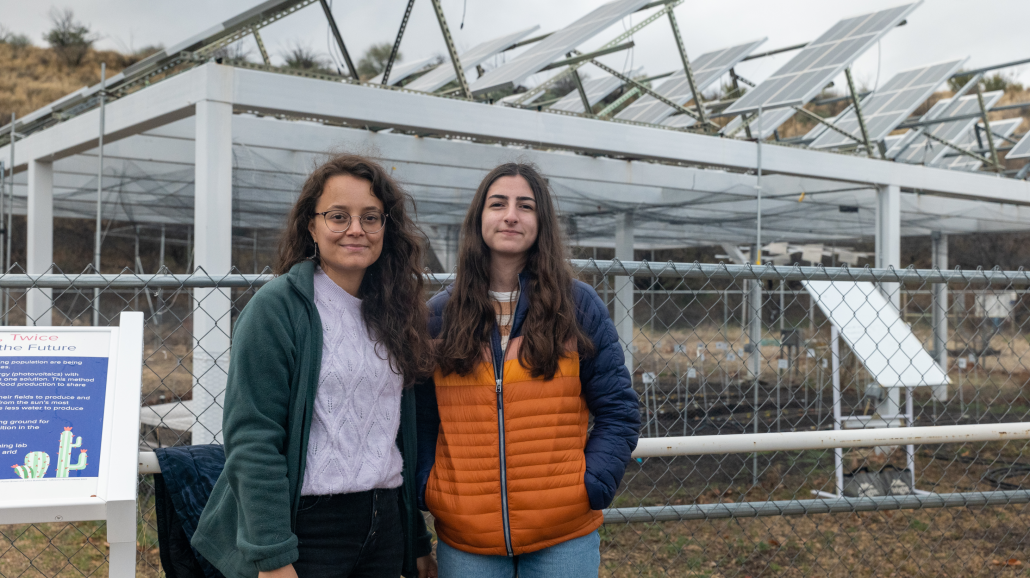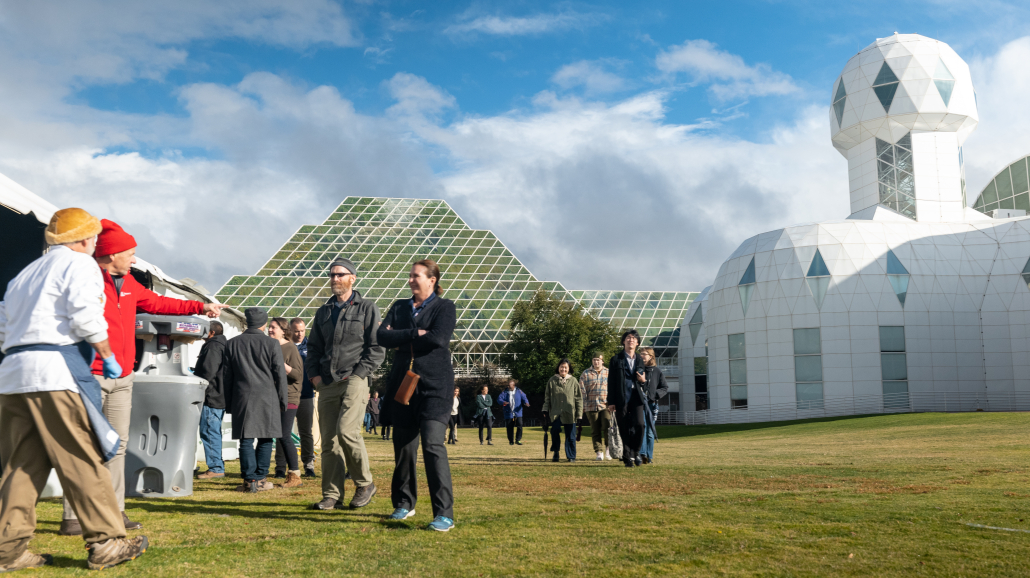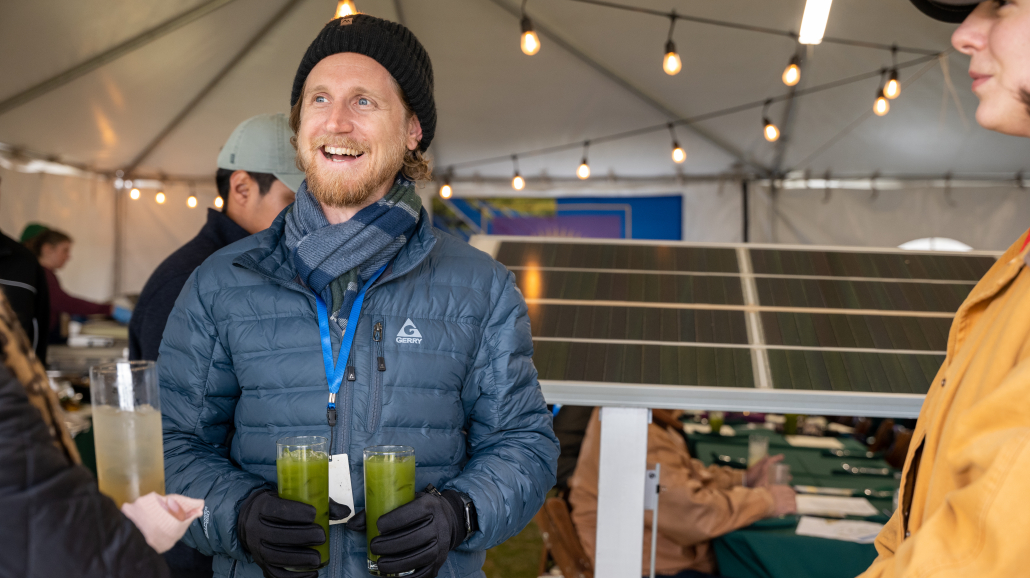MNL is an organization with a mission to “Heal the Earth,” through ecological restoration and native species landscaping. As the organization progressed, they established projects on solar sites, including conservation grazing and prioritizing native seeds and plants that provide pollinator benefits. Jake Janski, who’s been with MNL for over 20 years, is one of the leading players for MNL’s conservation grazing projects.
Janski, Senior Ecologist and the Director of Strategic Planning with MNL, contributes to the organization’s pollinator-friendly solar projects. As he continued his work, he began to see more need for prairie management on solar sites than what mowers could successfully provide. In typical situations, prescribed burns are often used to create a disturbance event, further promoting the health of the prairie. However, prescribed burns could not be used at the solar sites, requiring an alternative method.
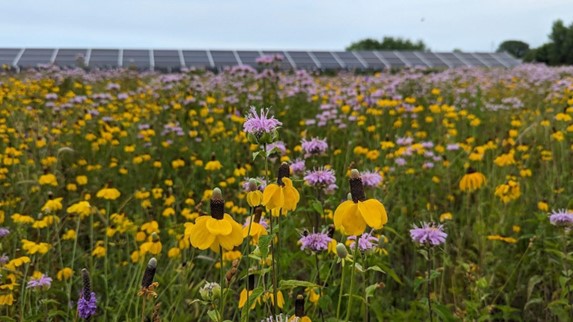
Pollinator plants with solar. Photo: Jake Janski
After meeting a sheep farmer in 2017 who lived near one of MNL’s pollinator-friendly solar sites, MNL decided to try sheep grazing to reinvigorate vegetation and remove dead thatch. With the timing falling at the beginning of the solar grazing industry’s development, and with Minnesota not having a large sheep industry, Janski focused on using sheep solely to help with the pollinator habitat. In other words, they used sheep as another tool for vegetation management and chose not to place the larger focus on sheep production. Janski started seeing surprisingly good results from this method and has built up from there, expanding MNL’s solar grazing projects.
MNL currently has about 60 Minnesota sites that incorporate solar grazing, with the average site being 20- to 00 acres and 2 to 10 kW. To date, they use 2,500 sheep, and they hope to expand their collaboration with other graziers to increase that number.
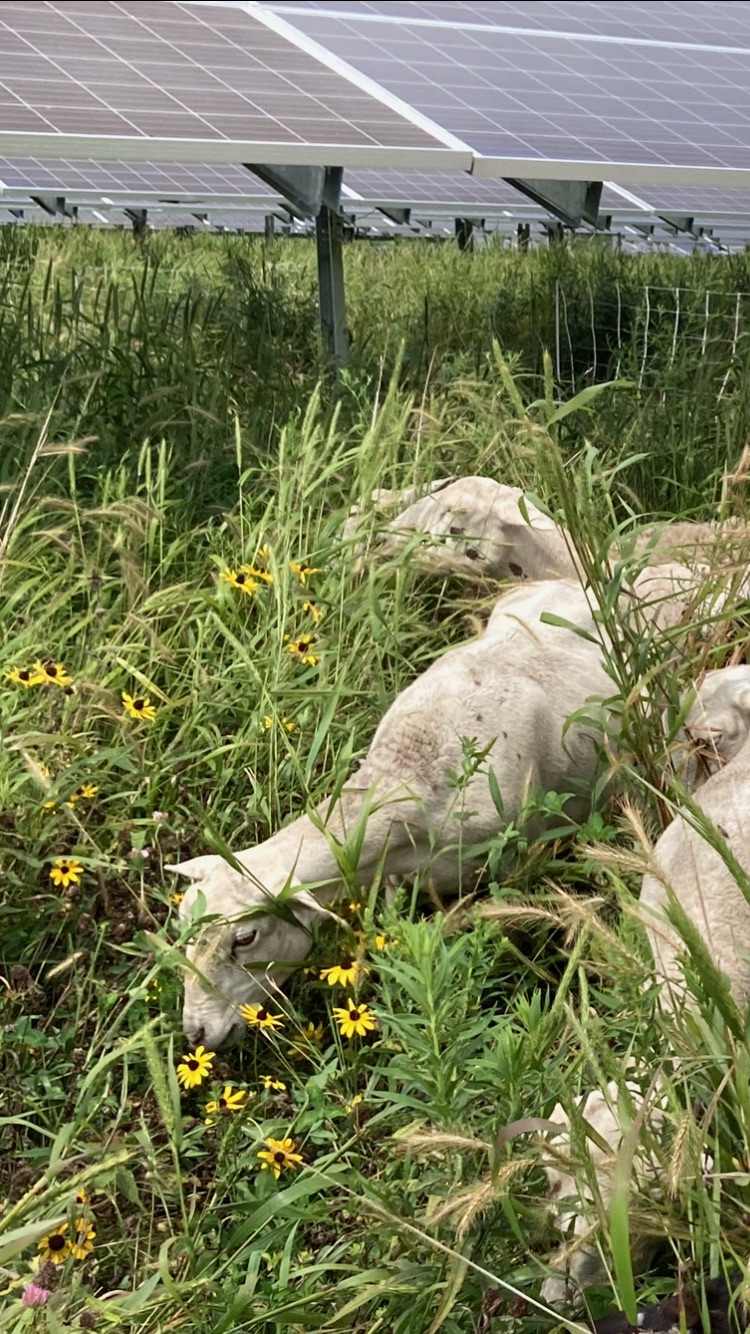
The sheep graze the sites for two to four weeks to maintain the vegetation and account for stocking density. Since the sheep are used as a tool to promote pollinator habitat, there is some variability in animal management. There is an ideal time each year to graze the sites, but grazing at the same time each year would negatively interfere with the botanical species composition. To avoid this interference, MNL rotates the timing of grazing between years.
Occasionally, the site will be grazed at a prime time for pollinators; however, Janski identified benefits for pollinators resulting from carefully managed solar grazing. For example, grazing allows for more gradual blooming periods. Staggering or delaying blooming extends the flowering season and will provide different food sources at different times. Grazing is also less aggressive, with plants rebounding faster than they would following a mowing event. This method promotes wildlife such as songbirds, rodents, and reptiles.
Broadly speaking, Janski believes that grazing is far easier on all habitats. MNL has secured research funding to continue an on-going study investigating the grazing impacts on vegetation and plant communities at solar sites. The results from this study should further support the benefits of solar grazing.
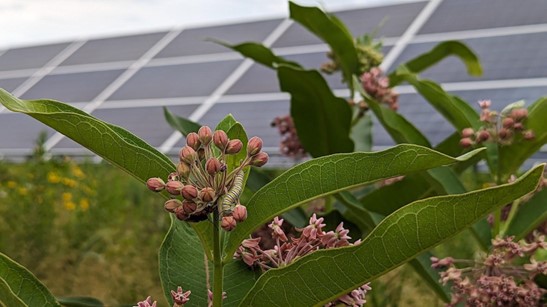
Monarch caterpillar and solar. Photo: Jake Janski
Despite the benefits that Janski has observed over time, there are some challenges associated with promoting a healthy trifecta of solar energy production, pollinator habitat, and animal welfare and production. One of his greatest challenges is getting the price points that are needed to build a robust program. He is competing with some low-cost mowing companies, while also dealing with overwintering costs and expenses of hauling water to sites. Janski and the team at MNL had to learn new information at a quick pace about animal health, especially on a landscape with variable conditions. Over time, they’ve been able to create better systems and know what to plan for.
Bringing sheep on-site has made some aspects of site management easier. They are dealing with less equipment damage and healthier soil. The sheep have helped with weed control, and while they have not completely eliminated the need for spot spraying, they are creating healthier plants with more competition that should make weed infestations less likely over time.
Janski shared that there was a time when an electric short started a fire on a site; however, the sheep removed the majority of the fire fuel load, resulting in a low-intensity fire that did not get hot enough to cause any damage to the panels. This is in direct contrast to mowing, which leaves a lot of material on the ground, creating a thick dense layer of fuel for fires.
With such clear advantages, it is no wonder that solar grazing has helped ease the majority of public discomfort regarding solar. Janski recognizes that agrivoltaics (solar grazing and solar pollinator habitat) can be an important, multi-purpose system that benefits communities. He reports that every group that interacts with MNL wants to hear about solar grazing and that they enjoy seeing livestock on the land. This positive support is also helping to get policymakers on board. MNL is in discussions with the state of Minnesota about pollinator scorecards and updated policy-level incentives. Furthermore, the Minnesota Department of Agriculture is beginning to push solar grazing from an agricultural perspective, giving others the confidence to get behind it.
With an increase in community support, Janski recommends creating and maintaining good partnerships with solar companies. The solar industry is a much faster moving market than agriculture in general, so forming these relationships can provide valuable updates on developments within the solar industry.
This ties in with what Janski identified as MNL’s future goal: to get as far ahead of development as possible. They want to build sites that serve as a solar site and as a farm, with structures and paddocks pre-built. The sites will also promote pollinator habitat. To accomplish this, more market analysis is needed to show the importance of investing in agrivoltaic modifications at the start of site planning. Janski and MNL want to expand their reach to other states that are not yet as solar-heavy. This can be accomplished by serving as consultants to provide and share evidence and examples of sites that have seen beneficial progress during the development and operation of an agrivoltaic site to large audiences through marketing.

